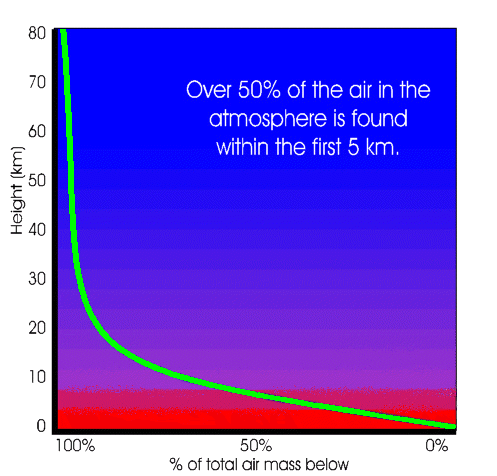Earth’s atmosphere is made up of layers, each of which is characterized by their temperature variation. However, these temperature differences with elevation are not large and do not cause the incredible heat generated by the space shuttle or meteor. Not only are there temperature variations in the atmosphere, but a huge pressure gradient. At high altitudes (space), the air pressure approaches zero. The pressure at a given altitude (generally) is given by the equation P(h)=1000e^-.126h where h is the height above sea level in kilometers and P(h) is given in units of millibars. Thus, air pressure decreases or increases exponentially depending on whether the object is going up or down respectively. Pressure will be one of the largest factors acting on anything coming into Earth’s atmosphere.



http://en.wikipedia.org/wiki/Upper_atmosphere (left)
http://www.rsbs.anu.edu.au/O2/Images/atmosphere.gif (middle)
http://atschool.eduweb.co.uk/kingworc/departments/geography/nottingham/atmosphere/pages/gfx/atmpres.gif (right)
50% of the atmosphere by mass is below an altitude of 5.6 km.
90% of the atmosphere by mass is below an altitude of 16 km.
99.99997% of the atmosphere by mass is below 100 km (almost all of it).
(figures obtained from http://en.wikipedia.org/wiki/Upper_atmosphere)